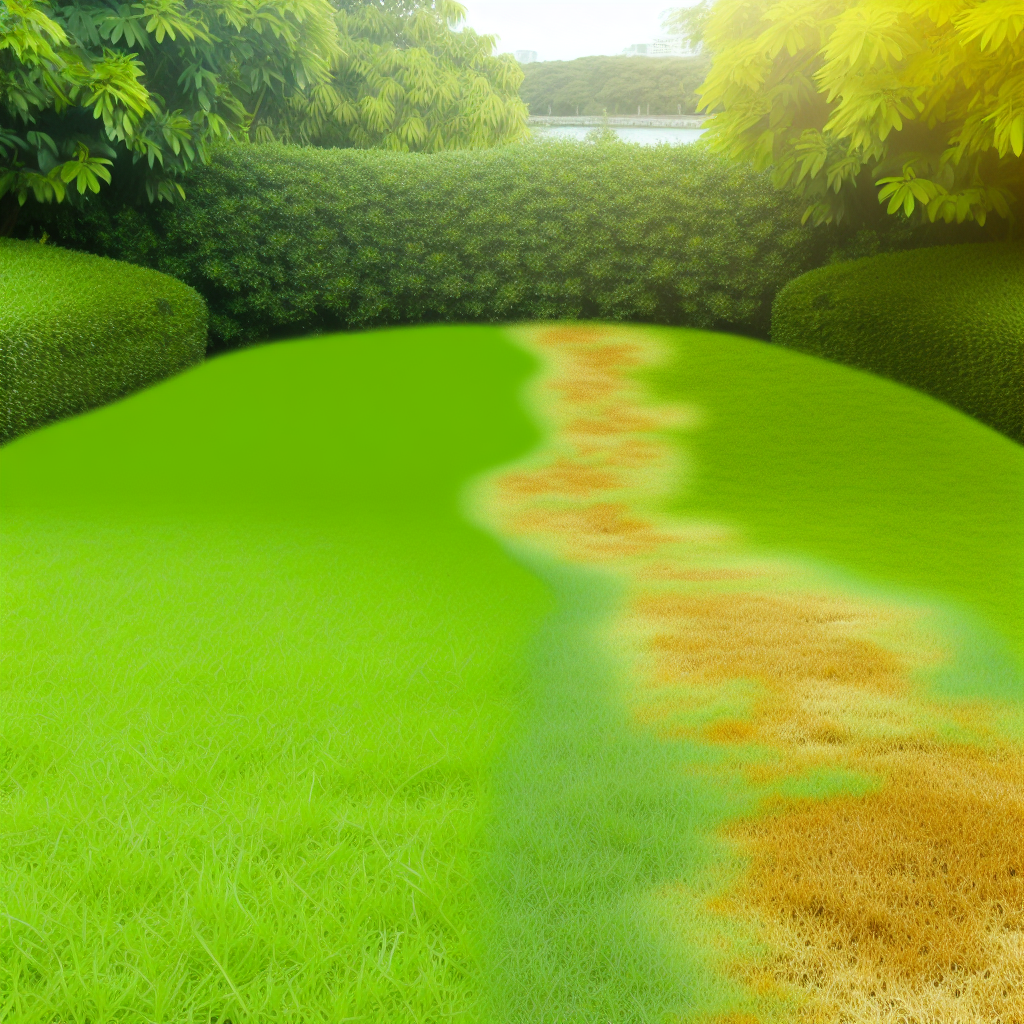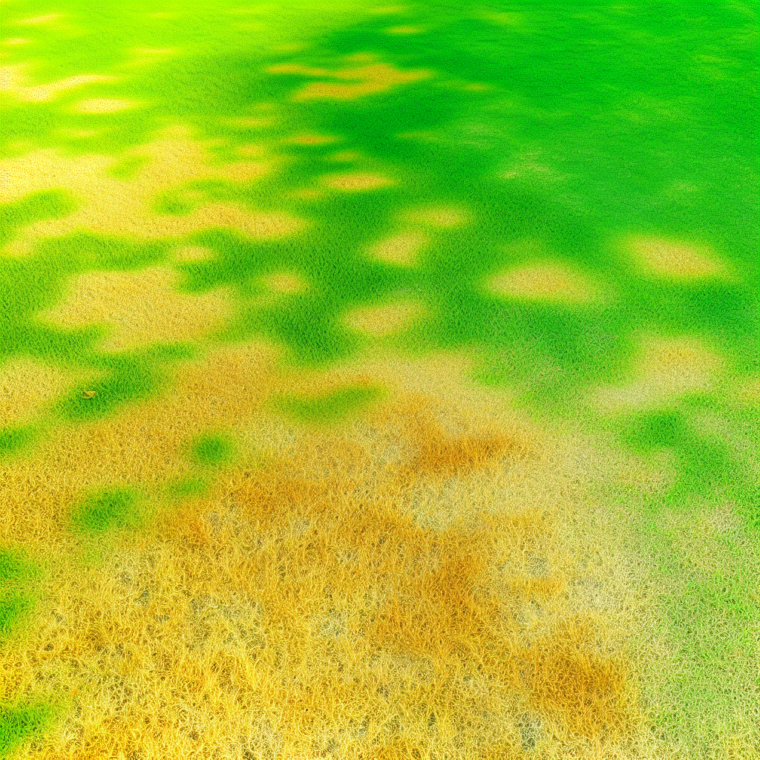“Revive Your Lawn: Uncover the Causes, Solutions, and Prevention Tips for Yellowing Grass!”
Introduction
A lush, green lawn is often the pride of homeowners, symbolizing care and attention to outdoor spaces. However, when patches of grass begin to turn yellow, it can be both unsightly and concerning. Understanding why grass turns yellow is crucial for effective lawn care. Several factors can contribute to this discoloration, ranging from environmental stressors and nutrient deficiencies to pest infestations and improper maintenance practices. Identifying the root cause is the first step in restoring your lawn’s health and vibrancy. This guide explores the common causes of yellowing grass, offers practical solutions to address these issues, and provides prevention tips to maintain a thriving, green lawn year-round.
Causes Of Yellowing Grass: Identifying The Underlying Issues
Yellowing grass can be a perplexing issue for homeowners and gardeners alike, as it detracts from the aesthetic appeal of a lush, green lawn. Understanding the underlying causes of this problem is crucial for effective remediation and prevention. Several factors can contribute to the yellowing of grass, each requiring a different approach to address the issue.
One of the most common causes of yellowing grass is nutrient deficiency, particularly a lack of nitrogen. Nitrogen is essential for the production of chlorophyll, the pigment responsible for the green color in plants. When grass does not receive enough nitrogen, it can turn yellow and exhibit stunted growth. To determine if a nitrogen deficiency is the culprit, a soil test can be conducted. This will provide insight into the nutrient composition of the soil and guide appropriate fertilization practices. Applying a nitrogen-rich fertilizer can often remedy this issue, restoring the grass to its vibrant green state.
In addition to nutrient deficiencies, improper watering practices can also lead to yellowing grass. Both overwatering and underwatering can stress the grass, causing it to lose its healthy color. Overwatering can lead to waterlogged soil, which suffocates the roots and promotes fungal diseases. Conversely, underwatering deprives the grass of the moisture it needs to thrive. To address this, it is important to establish a consistent watering schedule that takes into account the specific needs of the grass species and the local climate. Ensuring that the lawn receives about one inch of water per week, either from rainfall or supplemental irrigation, can help maintain optimal moisture levels.
Another potential cause of yellowing grass is soil compaction. Compacted soil restricts root growth and limits the grass’s ability to absorb water and nutrients. This can result in a weakened lawn that is more susceptible to yellowing. Aerating the soil can alleviate compaction by creating small holes that allow air, water, and nutrients to penetrate the root zone more effectively. This process can be done manually with a garden fork or with a mechanical aerator for larger areas.
Pest infestations are another factor that can lead to yellowing grass. Insects such as grubs, chinch bugs, and sod webworms feed on grass roots and blades, causing damage that manifests as yellow patches. Identifying the specific pest responsible is crucial for implementing an effective control strategy. This may involve the use of insecticides or natural predators to reduce pest populations and minimize damage.
Furthermore, diseases such as fungal infections can also cause grass to turn yellow. Conditions like dollar spot, rust, and fusarium blight thrive in certain environmental conditions and can quickly spread across a lawn. Proper lawn care practices, including regular mowing, appropriate fertilization, and adequate watering, can help prevent these diseases. In cases where disease is already present, fungicides may be necessary to control the spread and restore the lawn’s health.
In conclusion, identifying the underlying causes of yellowing grass is essential for implementing effective solutions and preventing future occurrences. By addressing issues such as nutrient deficiencies, improper watering, soil compaction, pest infestations, and diseases, homeowners can maintain a healthy, green lawn. Regular monitoring and maintenance, combined with an understanding of the specific needs of the grass species, will ensure a vibrant and resilient lawn for years to come.
Effective Solutions For Reviving Yellow Grass

Yellowing grass can be a distressing sight for any homeowner, as it detracts from the aesthetic appeal of a well-maintained lawn. Understanding the underlying causes of this issue is crucial for implementing effective solutions and ensuring the long-term health of your grass. One common cause of yellowing grass is nutrient deficiency, particularly a lack of nitrogen, which is essential for the vibrant green color of healthy grass. To address this, consider applying a balanced fertilizer that is rich in nitrogen. This will not only restore the color but also promote robust growth. However, it is important to follow the recommended application rates to avoid over-fertilization, which can lead to further damage.
In addition to nutrient deficiencies, improper watering practices can also contribute to yellowing grass. Both overwatering and underwatering can stress the grass, leading to discoloration. To remedy this, establish a consistent watering schedule that takes into account the specific needs of your grass type and the local climate. Generally, it is advisable to water deeply but infrequently, allowing the soil to dry out slightly between watering sessions. This encourages deep root growth and enhances the grass’s resilience to environmental stressors.
Another factor to consider is soil compaction, which can impede root growth and limit the grass’s access to essential nutrients and water. Aerating the lawn can alleviate compaction by creating small holes in the soil, allowing air, water, and nutrients to penetrate more effectively. This process can be done manually with a garden fork or with a mechanical aerator for larger areas. Following aeration, it is beneficial to apply a top dressing of compost or sand to further improve soil structure and nutrient availability.
Pest infestations, such as grubs or chinch bugs, can also cause grass to turn yellow. These pests feed on grass roots, weakening the plant and causing discoloration. To determine if pests are the culprit, inspect the affected areas for signs of insect activity. If an infestation is confirmed, consider using an appropriate insecticide or introducing beneficial nematodes to control the pest population. It is essential to follow the instructions carefully to minimize harm to beneficial organisms and the environment.
Fungal diseases, such as dollar spot or rust, can also lead to yellow patches on the lawn. These diseases thrive in specific conditions, such as high humidity and poor air circulation. To combat fungal infections, improve air circulation by trimming overgrown plants and mowing the lawn at the recommended height. Additionally, consider applying a fungicide if the problem persists, ensuring that you select a product suitable for the specific disease affecting your lawn.
Preventing yellow grass in the future involves adopting a holistic approach to lawn care. Regularly test the soil to monitor nutrient levels and pH balance, adjusting your fertilization and lime application accordingly. Maintain a consistent mowing schedule, ensuring that no more than one-third of the grass blade is removed at a time. This practice reduces stress on the grass and promotes healthy growth. Furthermore, remain vigilant for signs of pests and diseases, addressing any issues promptly to prevent widespread damage.
By understanding the causes of yellowing grass and implementing these effective solutions, you can restore your lawn to its former glory and enjoy a lush, green landscape year-round.
Prevention Tips To Maintain A Lush, Green Lawn
Maintaining a lush, green lawn is a goal for many homeowners, yet achieving this can sometimes be elusive due to various factors that cause grass to turn yellow. Understanding the underlying causes and implementing effective prevention strategies are crucial steps in ensuring your lawn remains vibrant and healthy. One of the primary reasons grass may turn yellow is due to nutrient deficiencies, particularly nitrogen, which is essential for healthy growth. To prevent this, regular soil testing is recommended to determine nutrient levels and guide appropriate fertilization. Applying a balanced fertilizer that meets the specific needs of your lawn can significantly enhance its color and vitality.
In addition to nutrient management, proper watering practices are vital in preventing yellowing. Overwatering or underwatering can both lead to stress, causing grass to lose its green hue. It is important to water deeply but infrequently, allowing the soil to dry out slightly between watering sessions. This encourages deep root growth and enhances drought resistance. Moreover, watering early in the morning reduces evaporation and fungal diseases, further promoting a healthy lawn.
Mowing practices also play a significant role in maintaining a green lawn. Cutting grass too short can stress the plants and expose the soil to excessive sunlight, leading to yellowing. It is advisable to follow the one-third rule, which suggests never removing more than one-third of the grass blade length at a time. Additionally, keeping mower blades sharp ensures clean cuts, reducing the risk of disease and promoting quicker recovery.
Another factor to consider is soil compaction, which can impede root growth and nutrient absorption, resulting in yellow patches. Aerating the lawn annually helps alleviate compaction by allowing air, water, and nutrients to penetrate the soil more effectively. This process involves removing small plugs of soil, which can be done using a manual or mechanical aerator. Following aeration, overseeding with a suitable grass variety can help fill in bare spots and improve overall lawn density.
Furthermore, pest and disease management is essential in preventing yellowing. Regularly inspecting your lawn for signs of insect infestations or fungal infections can help catch problems early. Implementing integrated pest management strategies, such as encouraging beneficial insects and using organic treatments, can effectively control pests without harming the environment. For fungal issues, ensuring proper drainage and avoiding excessive moisture can reduce the risk of disease development.
Lastly, environmental factors such as shade and temperature fluctuations can also impact lawn health. Grass growing in shaded areas may struggle to photosynthesize effectively, leading to yellowing. Selecting shade-tolerant grass species and trimming back overhanging branches can help mitigate this issue. Additionally, during extreme heat or cold, providing appropriate care, such as adjusting watering schedules and avoiding stress-inducing activities, can help maintain lawn health.
In conclusion, preventing yellowing and maintaining a lush, green lawn requires a multifaceted approach that addresses nutrient management, watering, mowing, soil health, pest control, and environmental considerations. By implementing these prevention tips, homeowners can enjoy a vibrant lawn that enhances the beauty and value of their property. Regular monitoring and timely interventions are key to ensuring that your lawn remains a source of pride and enjoyment throughout the seasons.
Conclusion
Yellowing grass can result from various factors, including nutrient deficiencies, improper watering, pest infestations, diseases, and environmental stress. Nutrient deficiencies, particularly nitrogen, can cause grass to lose its vibrant green color. Overwatering or underwatering disrupts the grass’s ability to absorb nutrients effectively, leading to discoloration. Pests like grubs and diseases such as fungal infections can damage the grass roots and blades, causing yellow patches. Environmental stressors, including extreme temperatures and compacted soil, also contribute to yellowing.
To address yellowing grass, it’s essential to identify the underlying cause. Conduct a soil test to determine nutrient deficiencies and apply appropriate fertilizers. Adjust watering practices to ensure the lawn receives adequate moisture without over-saturating the soil. Implement pest control measures if necessary, and treat any fungal infections with suitable fungicides. Aerating the soil can alleviate compaction and improve root health.
Preventive measures include maintaining a regular lawn care routine, such as proper mowing, fertilization, and watering schedules. Choosing grass varieties suited to the local climate and soil conditions can also enhance lawn resilience. By understanding the causes and implementing targeted solutions, homeowners can restore their lawns to a healthy, green state and prevent future yellowing.


